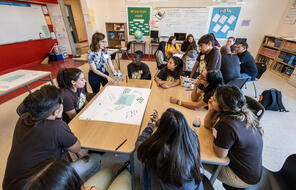Overview
Why Teach Annotating and Paraphrasing?
The Annotating and Paraphrasing Sources strategy requires students to underline key words, write margin notes, and summarize main ideas as they read a primary or secondary source. Use this strategy if you have introduced a writing prompt that students will revisit throughout a unit of study. Because careful reading is integral to powerful writing and thinking, annotating text often helps students craft stronger written arguments. By practicing this strategy, students will learn to take notes from primary and secondary sources that address the validity and bias of evidence, the perspective of the source, and their own interpretation. Students will need regular practice, reinforcement, and feedback on their annotations in order for this type of careful reading to become routine.
Procedure
How to Teach Students to Paraphrase and Annotate Sources
Unlimited Access to Learning. More Added Every Month.
Facing History & Ourselves is designed for educators who want to help students explore identity, think critically, grow emotionally, act ethically, and participate in civic life. It’s hard work, so we’ve developed some go-to professional learning opportunities to help you along the way.
Exploring ELA Text Selection with Julia Torres
On-Demand

Working for Justice, Equity and Civic Agency in Our Schools: A Conversation with Clint Smith
On-Demand

Centering Student Voices to Build Community and Agency
On-Demand















